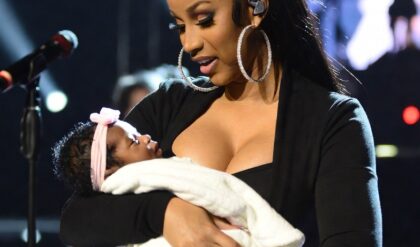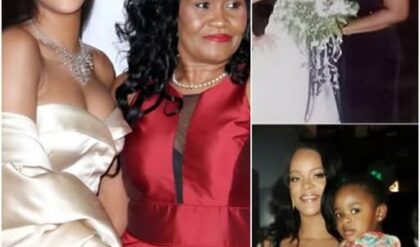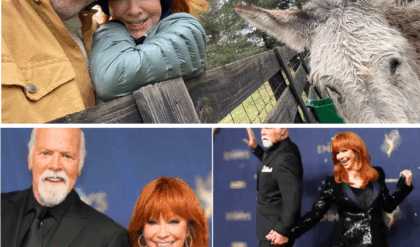The team from Wētā FX breaks down creating new characters from scratch, aging up King Kong, and designing Hollow Earth.
Movies have a long history of transporting the viewer to new worlds and fantastical settings, and as filmmaking evolves, the art of VFX has a massive role to play in our favorite form of escapism. From Godzilla x Kong: The New Empire to Kingdom of the Planet of the Apes, one of the effects teams behind the biggest VFX-heavy movies dominating the box office right now are the folks at Wētā FX.
To celebrate the release of the latest installment in the MonsterVerse, I sat down with Wētā’s Overall VFX Supervisor, Kevin Smith, and Animation Supervisor: Ludovic Chailloleau for Godzilla x Kong. During our conversation, Smith and Chailloleau broke down how they created the otherworldly landscapes of Hollow Earth, creating creatures like Skar King, Suko, and the iridescent Godzilla creature Shimo from scratch, and even aging up Kong Kong himself.
How Wētā Turns Filmmaker Ideas Into a Reality on the Big Screen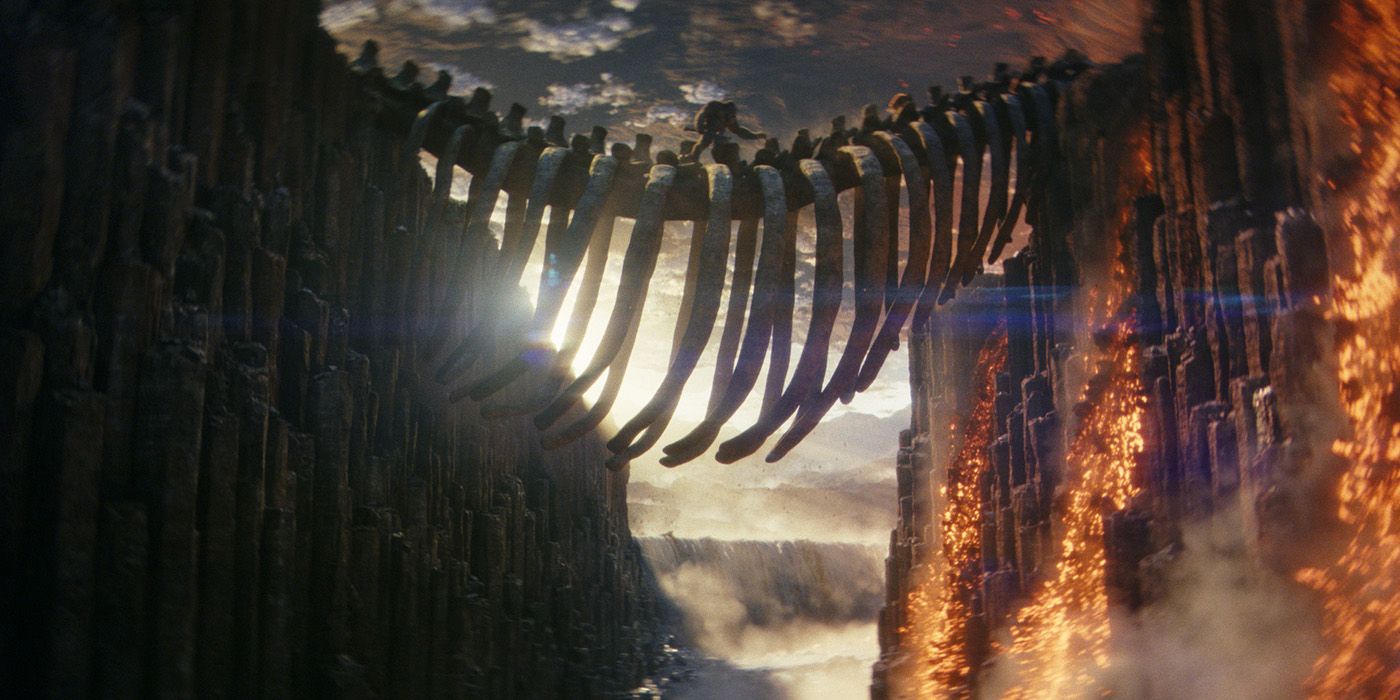
COLLIDER: I am so excited to speak with you guys. I had a blast watching this movie.
KEVIN SMITH: Me too. Mostly because it meant that we were done. [Laughs]
Obviously, the MonsterVerse movies rely very heavily on VFX, so can you both talk a little bit about the process for a film this massive?
SMITH: For us, mostly it starts with the clients. The clients generally have done a lot of work with pre-vis and storyboards and art and ideas before it gets to us. These are clients that I’ve worked with before, as far as the director, because we worked on Godzilla vs. Kong, the first one. It’s really nice because there’s a relationship there, and there’s some trust that they know that we can help them with some of their creative heavy-lifting, that they don’t have to turn over things to us that are, like, done to the nth degree. They can be vague in places, or, like, “We have an idea for a cool moment here, but what are your guys’ ideas for that?” So, it’s nice because this movie, with that trust with a client there’s a nice back-and-forth. You’re not just getting told what to do, and you’re not just hands, I like to say.
Then it’s just, I’m the face with the client, but behind me there’s Ludo and there’s CG supes and comp and all the animators, and then all the hundreds of people who worked on this that are bringing their own creative ideas to it. It’s not a democracy, but a lot of that creativity, which is one of the great things about working here, filters up through and you get little ideas that end up in the movie, and it’s pretty awesome.
That’s amazing. How closely with Adam did you have to work to make sure that this came to fruition in the way that he envisioned it? What is the process for your team relaying with that team?
SMITH: Mostly, we would call Alessandro Ongaro, who was the client-side visual effects supervisor. He’s kind of that firewall between the director because there’s so many demands on a director’s time, even in post, that we didn’t really talk to Adam too much. He actually was really lovely because he actually made time to talk to us a couple of times, which, honestly, for a movie like this is very unusual just because, like I said, there are so many demands on his time. But he’s a genuinely a good dude, Adam. So, we did talk to him a couple of times, but mostly dealing with the client supervisor.
Creating New Characters for ‘Godzilla x Kong: The New Empire’ From Scratch
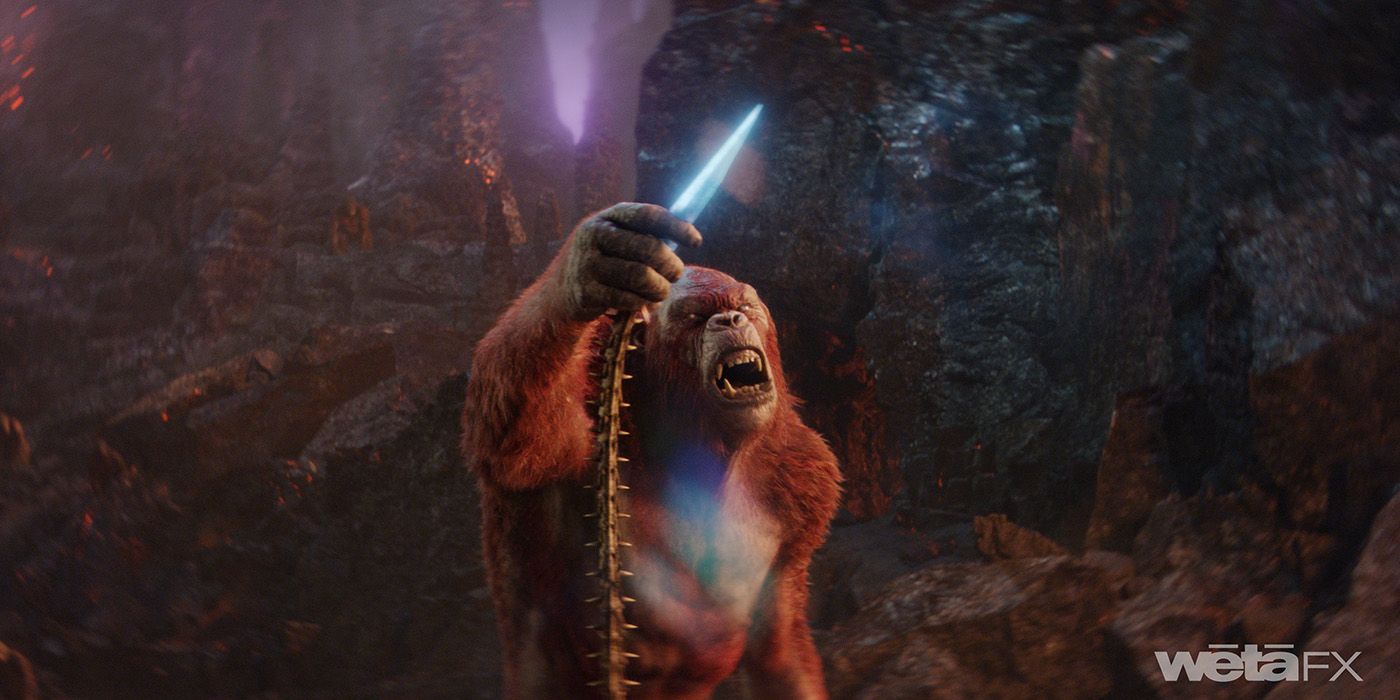
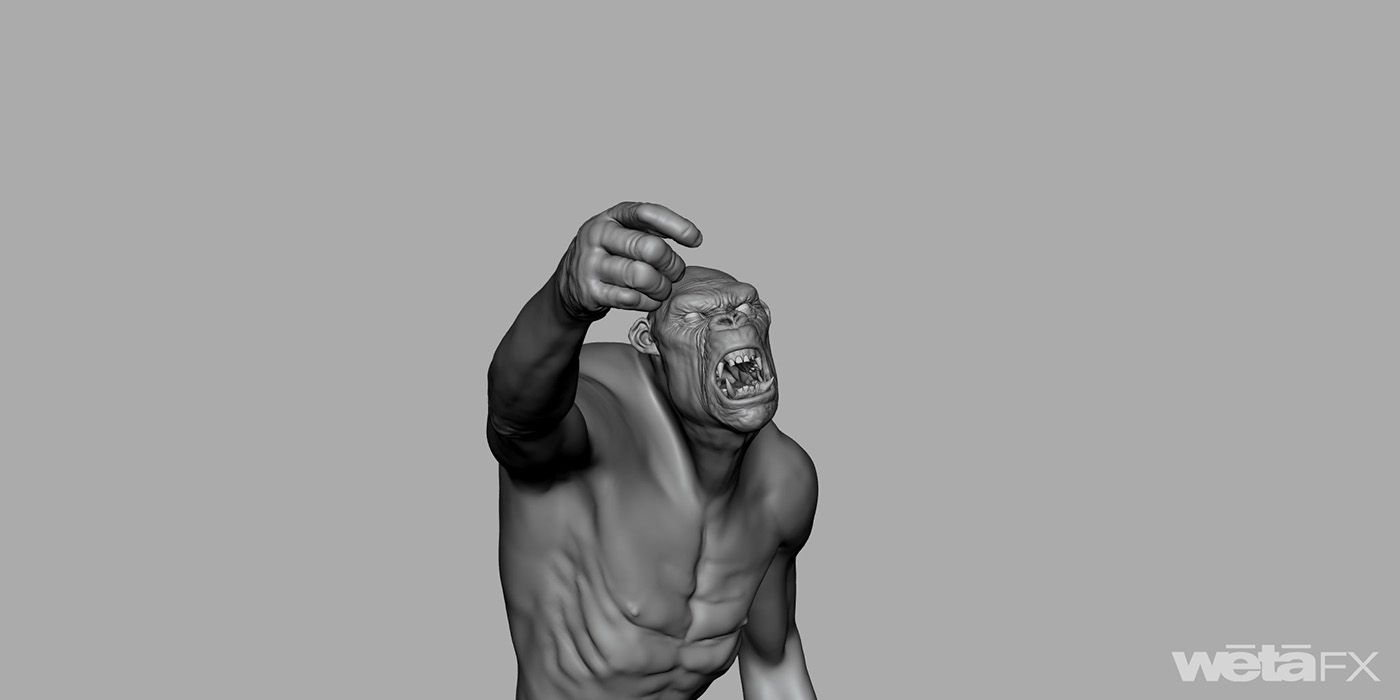
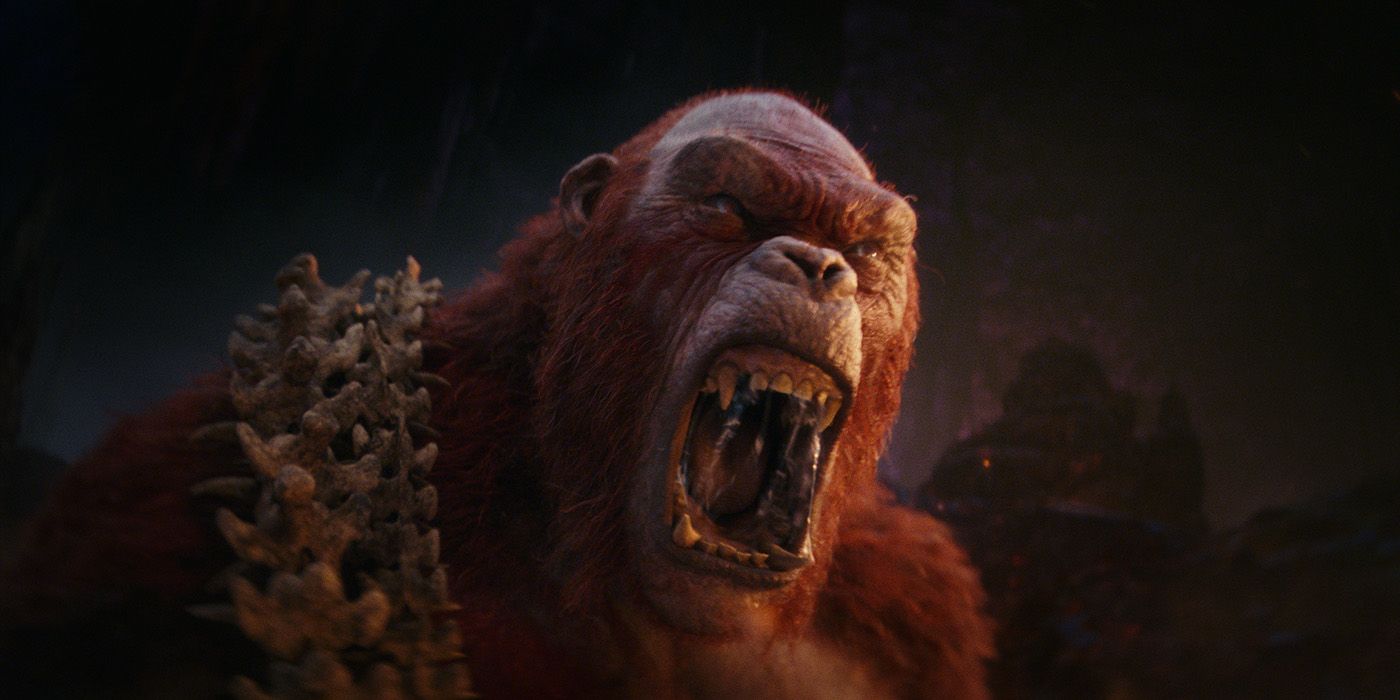
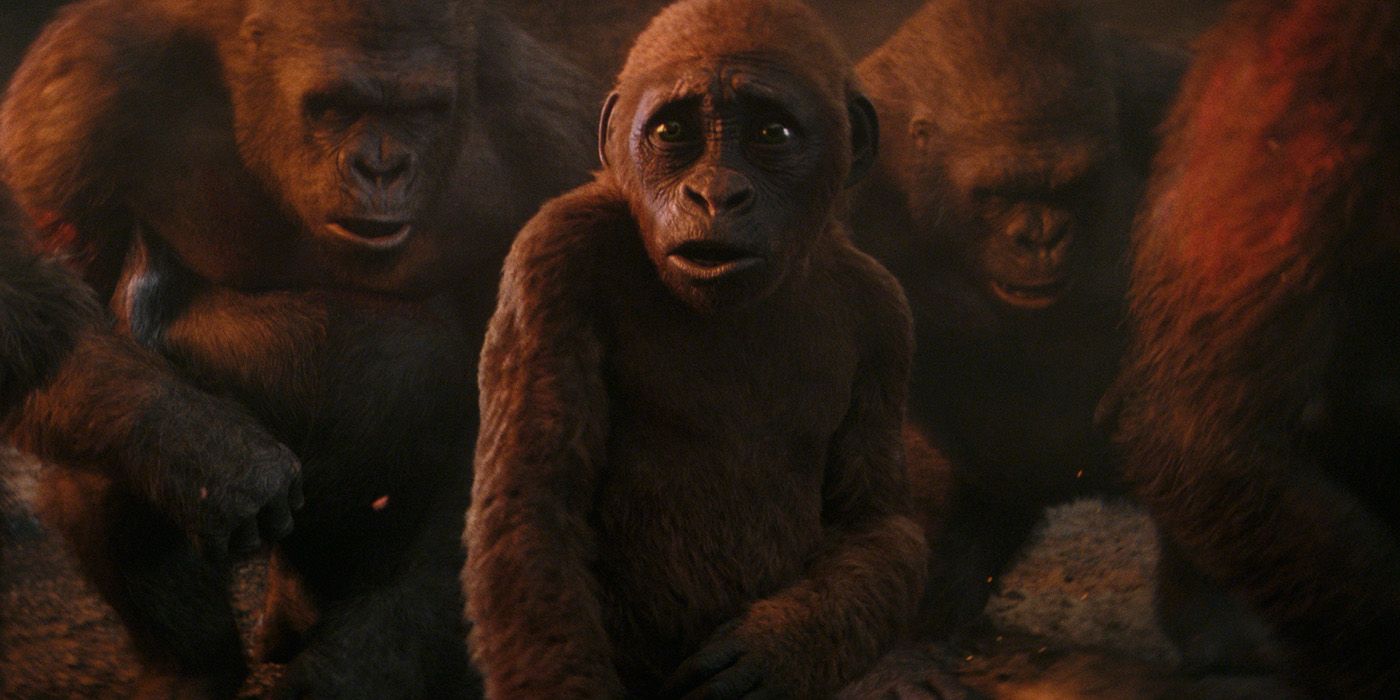
So with this process, you created a lot of these characters from scratch, and we’ll dive into those characters more in a minute, but I do want to hear about the process of aging up Kong, because he really does feel like the main character in this one. So, how did that process go about?
SMITH: The first thing we got was some concept art from the clients where they had done a bit of a draw-over. He’s got a little spare tire around the stomach, he had a big, long beard, and a lot more gray hair. Honestly, with a big, long beard, I think they were just trying to make him look like Adam, the director. [Laughs] If you’ve never met him, he’s a really big dude. He’s, like, 6’6. He’s really tall, and he’s got this really grizzly mountain man beard, and we were like, “Oh, we’re trying to make Kong look like the director.” But there’s a little back-and-forth, so we started trying to help implement that. The beard got a little shorter and they didn’t make him look quite so old. There’s a fine line there between making him feel like time has passed between the last movie and making him feel like an old man. So, mostly it was a little bit longer in the beard, a little bit more of the gray in the hair.
With Kong in particular, his facial expressions are so distinct in this movie, all of them are, honestly, and I feel like a lot of the emotional weight of this movie relies on that. Can you talk a bit about the facial expression capture process and making sure that those emotions come out the way that you want them to look?
LUDO CHAILLOLEAU: Well, that was a very big challenge for this because they are not talking; it’s a silent movie. The whole thing we wanted to do is to make sure that the emotion beats were clear, and it has to go with the body language first. The whole structure of the sequences was very clear by the clients. It had been done very nicely, as Kevin said. They had a strong storyboard and good pre-vis, which has been done. So, each shot has a story and we just started from there to make sure that facials were here to bring something in addition, but the body had to be the first language.
When we were into the facial land, we started to think about a distinction to have for each of the characters, so they have different ways to act with the face. One of the things which is very key for Kong is Kong is a brute force, very central, when he’s doing things, there is no asymmetry in his face. There is no motion in the mouth. He’s not giving some gimmick. He’s a solitary dude. He doesn’t have to make people laugh. So, it’s very crude in the way he reacts, and the way to do that was just mainly to work with the brows. The brows are the main things that he’s using for expression. We go up, down — we didn’t want to go cartoony. But the brows and the eyes and the lids, all the expression of the upper face is the key things on Kong. There is nothing really on the lower part. He’s quite stoic. Pretty different to the other characters.
I like that you point out the brows because there is a moment — I know he’s not funny a lot of the film, but there is a moment right before Godzilla comes in and they both dive into the portal. That moment of panic on Kong’s face is just fantastic.
CHAILLOLEAU: I think this was done by a Scanline, no? The pyramid things.
SMITH: Are you talking about where he’s like, “No, wait!”
Yeah.
SMITH: Yeah, I think that was Scanline.
Well, everyone working together did a fantastic job. So when designing those facial expressions, are you doing that from scratch or are you modeling it off of motion-capture or something like that to give you a base to start with?
CHAILLOLEAU: No, we have obviously two different systems. The one that we developed over time for Avatar is not something that we had to apply on that because it’s a different structure. We don’t have the whole preparation of the capture for the face. We were essentially capturing performers on stage as reference. We had cameras for their expressions, we had clear direction when we were performing for the shots, but these were always things to use before the motion team and facial teams as reference. So from that, we just started to build based on– We have basic expressions to work on at the base, and for Kong, we already had legacy from the previous movies. But mainly it’s a short script work for the facial expressions, which goes with what we call the FAC system. From there, we just keep what we need on the shot. So, it’s really driven by artistic visions. It’s not like there are muscles and a lot of physics behind it, but the way we animate that with the reference, there are a lot of artistic transcriptions.
Wētā Explains the Biomechanics of ‘Godzilla x Kong’s Shimo and Suko
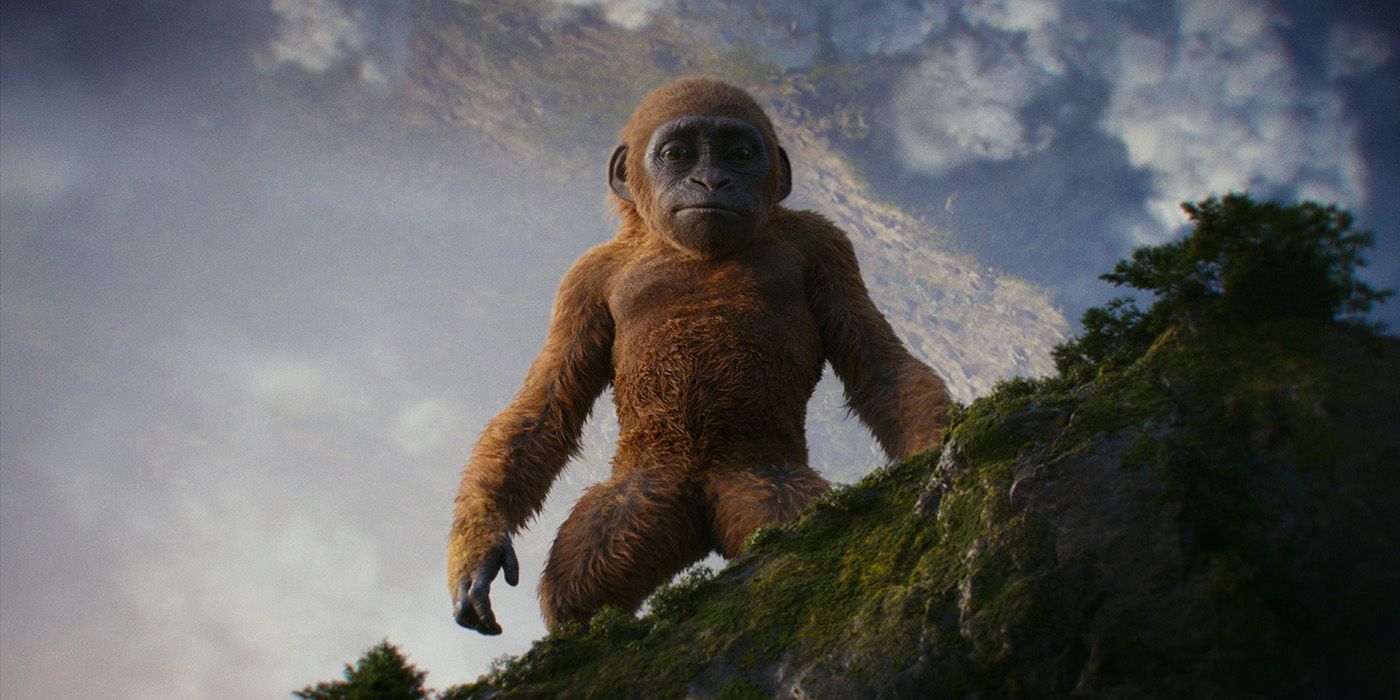
SMITH: I’m glad you said that because that’s my favorite. That’s one of the things I’m most proud of because it was very difficult. When the clients first turned over the art for that, they had actually done a digital maquette, so they had a pretty good idea of what they wanted the shape to be. Generally, with something like that, the first thing we have to do is do the first pass at redoing it so that the creature can work biomechanically. When you’re doing just pure design work, you’re like, “Oh, it would be cool if they did this,” and then you can’t put a skeleton in that creature and make it move because it biomechanically just doesn’t work. The shoulder is intersecting the head because it’s too narrow, or whatever the reasons are. So we took their model, remodeled it, and did a basic rig in it so that Ludo and his team could start doing motion tests.
But as far as the exterior, it was really difficult for us. We have our own render, it’s called Manuka, and it’s what you would call a physically-based render. So we try to model in the render exactly what happens in real life, to the best of our ability. The problem with that is you can’t cheat. [Laughs] There are no shortcuts anymore. The more physically based you get, the less you can just, “Well, I want this thing to be red no matter what.” It doesn’t work like that. So she’s this really pearly, iridescent, complicated surface, and with our physically-based render, it took a long time, a lot of iterations to get that right. The Look [Development] department and I spent quite a long time trying to get that just right so that it moved correctly. As far as, not her moving her arms and legs, but as she turned through a light or moved through a scene, the iridescent highlights rolled across in an interesting but not gaudy way. Then on top of that, with all the crystals, which are quite complicated to get that look right, then she’s got a glow, and then there’s the frost breath. Yeah, I’m really pleased with the way that it turned out. Mike Curtis was the shader who did a lot of that work, and I agree with you, it looks amazing. It was just iterate and iterate and iterate and iterate so you get it until it looks right. It not only looks right, it looks right in the way that you can get the client to buy off on.
It looks stunning. I really love, as you mentioned, the way that the light just refracts off of all those colors. It’s fantastic. With something like that, and rendering an iridescent creature, how does that differ from rendering something with fur like you would do for the other monkeys and stuff?
SMITH: She was a lot faster. Fur can be slow because there’s just a lot of geometry there and a lot of surface area that you have to calculate what it’s supposed to look like and a lot of shadowing and things to intersect. So, Shimo was pretty fast to render for the most part until you get to the crystals, which anything semi-transparent is going to start to be slow in the render. So it would go really fast and we’d get to the crystals, and then you’re just waiting a long time. But it was worth it. I think it looks pretty cool.
Nice. Another favorite new character that I think everybody is gonna love is the little mini Kong, Suko. He’s just so cute. Can you talk about the design for that character, and did you pull any inspiration from other adorable little creatures in pop culture or anything like that?
SMITH: I mean, it’s the same for him. So we initially got some art, and it’s the same kind of process. For a bipedal character like that, you don’t really generally have to worry about the biomechanics much, so we got a creature rig put in it so that we could get it to Ludo and his team. Like he was saying earlier, a lot of what makes him adorable is his facial expressions and the way he moves. So we got the art from the client, and they initially wanted him to be like– You don’t want it to be a baby, but you don’t want it to be like a little adult. The clients were like, “He’s a punk.” He’s just this punk kid, maybe not quite 15, a teenager, but almost a teenager, and he’s kind of a jerk at the beginning when he bites Kong. And initially he had a big mullet, which was awesome. It was awesome, but it kept shrinking back, down, down, down, because it was just too anthropomorphic. But the brief from the client really was just like, “When people see him for the first time their reaction should be, Aww.’” That was basically what drove us. Because I would always, like, if I could find somebody who is not on our show and be like, “Hey, look at this character…” if they went, “Aww,” I was like, “Yes, we’re doing the right thing.”
CHAILLOLEAU: That was the very first test we started with, with his eyes. The eyes are the things we work the most for this character. We had several iterations of, “No, more darkness. More brightness. Less, more color…” Because you want to read what’s happened emotionally with the eyes like we did with Kong and Skar King. But for that character, because he had a big surface, it caught a lot of lights and the specular can be interfering with the emotion and the way he’s looking and the direction he has. So, we did a bit of work on that in terms of Look [Development] and to make sure that the eye direction was clear for each shot so we can read the emotion in a good way.
Then we had a bit of work same way in the [shot scope], so it doesn’t look too old. Monkeys and gorillas have some very big wrinkles around the eyes. We had to play with that and turn it down until the point where it was looking young enough, but not too smooth, and same for the mouth. Too quickly we ended up with a coconut shape that we call coconut shape inside, you know, this big mouth with straight lips, which is not very nice. So we started to break it up, and the same things — on the shape we had for the facial so it could be a little bit more expressive but not too much. They are big titans, so we don’t want to go too cartoony or too extreme emotion into his face. But it’s definitely the character which has the most range in terms of motion compared to Skar King and Kong.
How Wētā Got Away With That Crazy Kong vs. Suko Fight Sequence
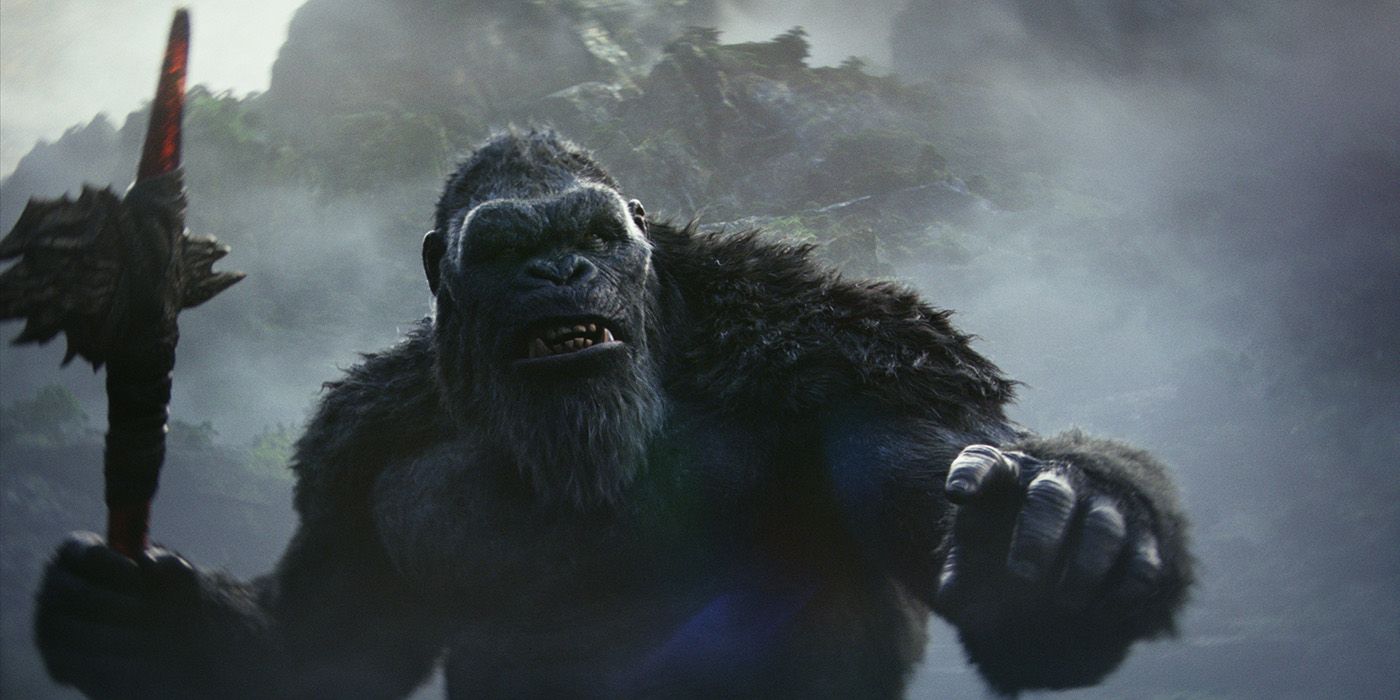
With that one, did you work on that initial fight sequence when Kong first meets that character?
SMITH: Yep. That was us. Where he bites him on the finger and…
And he swings him around. I was wondering about the process of swinging another character with that character. That was very impressive.
SMITH: That was an idea that the client supervisor had, Alessandro Ongaro. That was his idea. So Ludo and the animators animated it up as some of the shots they’re doing, and I was like, “Never going to get through…” On Godzilla vs. Kong, there’s a moment in the beginning of the movie where he’s just woken up, he’s walking down the river, and he scratches his butt. Initially, in the mo-cap that we did for that, he scratches his butt and then he sniffs his finger. [Laughs] It was so funny, and we’re like, “Yeah, that’s never going to get past the studio,” and it didn’t. They left the butt scratching, which is fine, but things like that that you do that are so great and you’re just like, “Yeah, no one at Legendary is ever going to approve that.” We are the same on this. It was like, “That’s never gonna get approved. You can’t hit with the other character.” But they made it through. Everyone loved it. In the test screenings, that was the biggest laugh in the whole movie consistently, so they left it in. It was awesome. It’s so unexpected.
CHAILLOLEAU: In motion, the way we tackle that was always in the mind of, like, Suko has to get out of this scene without too much blood or whatever. He has to feel alive and seem pretty well in shape, so that’s the way we just tackled that first pass to make sure that, at least when we are giving the joke of that, because everyone as animators wanted to work on that. The thing was like, “Okay, but don’t go too hard at the end. You need to get back in shape because we don’t want to kill the guy.” He’s just here for the joke. [Laughs]
SMITH: They basically said, “You can leave that beat in if you add a shot where Suko lifts up his head and kind of shakes his head and you can see that he’s fine.” That’s how it all got left in there. The studio’s like, “You just have to see right away he’s not fucking dead.” [Laughs]
So with Skar King, with that character in particular I felt like I could see an actor in that role because it’s got so much menace and gravitas and intention to it, more than just instinct for the other characters. What was it like to animate that character, and were you inspired by any particular acting performances for creating that?
CHAILLOLEAU: Yes. Allan Henry is the actor in charge of Kong, and also we worked with him on the character of Skar King, mainly because he has very good language. He has a lot of experience with all the quadruped creatures, so he knew how to make it work in terms of mechanics. But in terms of character, I, as I said at the beginning, was very thoroughly thinking at the beginning, and I was like, “How can we make sure that they are different?” Because they are different in shape essentially, but in terms of character that would drive to a way to be. And for this guy, who has long arms, a very sneaky way to just tackle problems, he’s never in front. He’s the opposite of Kong. He’s going from the corner and, because he has long arms, reaching you from the back, and you don’t even see that he’s already thinking a step ahead. So we ended up just bringing with Allan a little bit of this character to give a bit of this sneakiness on every motion he was doing.
And then on top of that, because he had long arms we wanted to use that as a tool to show that it’s the main agility weapon that he has. Those things are scary. So when he’s getting out of the cave, he’s using the arms and scratching the ground because they are so heavy. He doesn’t even work with the weight of them. He’s just walking with them slinging down, so it looks like a gangster, I would say.
That’s the way we started to bring, you know when you take the whip, it’s just taking the whip down like that. It’s not very going with a basic pose like normal people will do, you know. You take the remote like that, he’s doing like this. It’s not very…he’s looking more like…I think “gangsta” is probably the first word we had in mind to tackle that. The Godfather, you know, the one that everyone will listen [to]. And that makes him very different to Kong and that started to give a very significant look for him.
Making Hollow Earth Look Both Familiar and Otherworldly
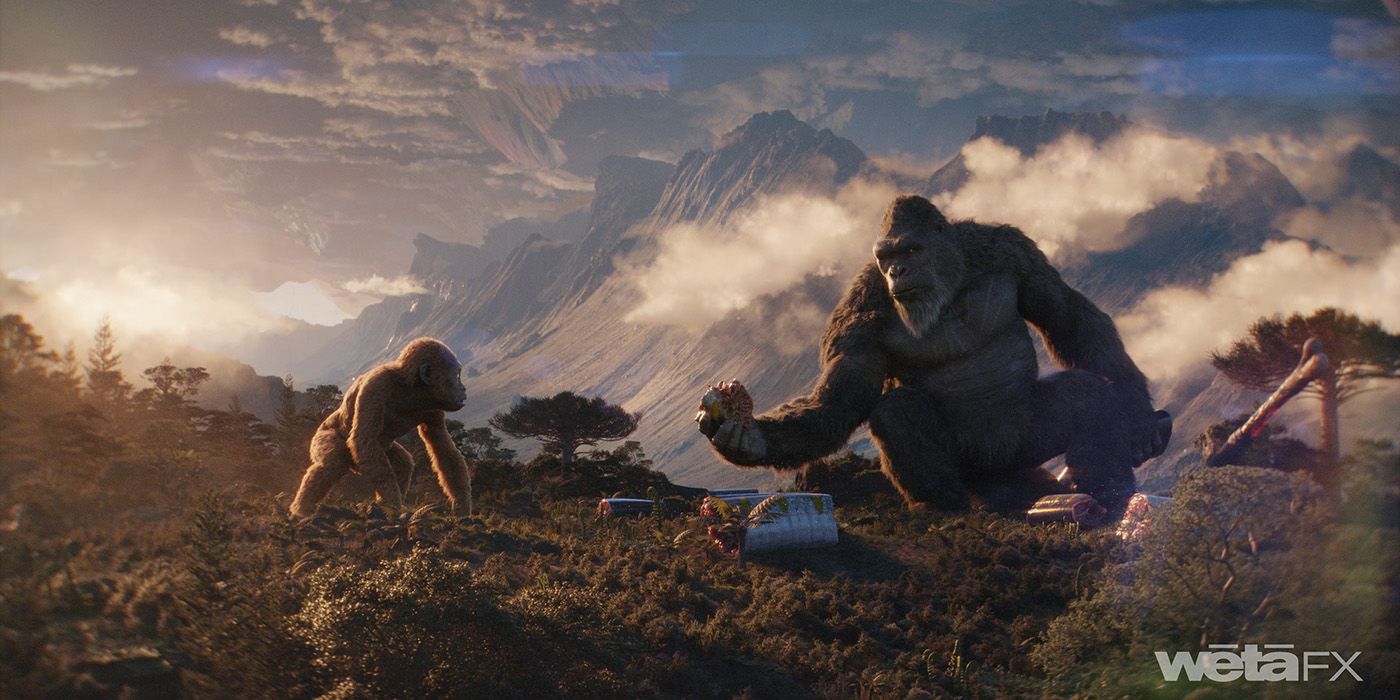
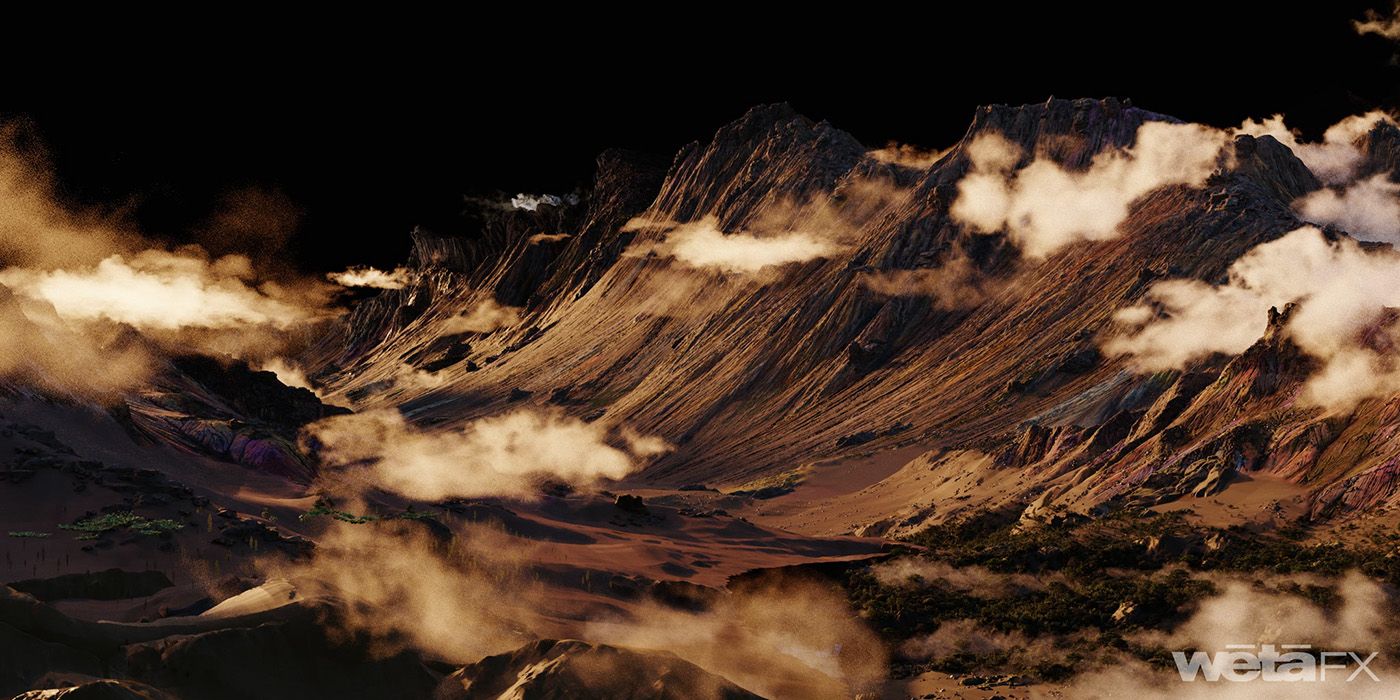
So a lot of this movie takes place in Hollow Earth, which is obviously not a real place. So how did you guys go about creating the environments and making sure that they look like they’re part of Earth, but not necessarily making them look otherworldly as well?
SMITH: Well we did – Did we do all of it on the first movie? – I think we did all of Hollow Earth in Godzilla versus Kong. And we didn’t do all of it here. But for us, it was nice because you’re kind of just riffing off of the work you’ve already done. The clients went and shot a lot. They took a lot of photographs and shot a lot of drone footage in Iceland because they wanted, they wanted to take, they didn’t want to change Hollow Earth, but they definitely wanted to expand and show that there are other kind of biomes happening. Like it’s not just jungle, jungle, jungle. So that was really nice.
So what we did is we got the clients to show us the parts of the reference that they really, really liked. And we just tried to incorporate that into the environment as we’re designing. And there’s a lot of interesting stuff that they liked. There was like, when Suko and Kong are at the lake, and they have that fight with the lake monster. If you watch the backgrounds, there’s a lot of super, super duper colorful stuff happening in the hills and you know, like the oxidation from the reference, like minerals and elements leaching out into the dirt.
It was, yeah, it was nice to go a little bit wider because creatively…like the scene where you know Kong’s hitting the other apes with Suko, it was nice because we played that very Hollow Earth-like, right? It’s very jungle-y, but we played it really misty and, and mysterious which is cool. You know, honestly, the easiest thing to make it feel like Hollow Earth is to put more land up in the ceiling, and then once you do that, you can kind of get away with just about anything.
With that lake environment that you mentioned, I noticed in the brief that you guys were able to use some of the water technology from Avatar. Can you talk about that tech and like how you applied it in this movie?
SMITH: Yeah. They really figured out, I mean, Avatar spent a decade working on water stuff. So for us, it was really just kind of taking the state of the art for how we do water simulations internally at WĒTĀ and doing it that way. The hard thing for the effects artists was that Kong is so big that…I’ll even wind that back further.
So one of the initial briefs from the client for this movie, from Adam, was that when we’re in Hollow Earth – because all of our work is like basically no humans in any of our work. Our work was just the monsters in the monster world. And the client brief was when we’re in there, we don’t want to worry about the scale so much. You don’t have to slow everything down because you can’t have an exciting fight when everyone is moving so slowly to try to sell the weight and the size of them. When we’re in Hollow Earth, we just wanna, we’ll bring the camera up to the monsters and let them act like don’t, you know, we’ll keep it exciting. We just want to put the viewer into that world and not worry so much about that scale. So you get like a 300-foot-tall ape moving really fast. And he doesn’t necessarily maybe look like he’s visually moving so fast because he’s doing bipedal things at the rate you would expect a person to do them. So it feels natural in that sense.
But like when his arm is swinging through the water at 300 kilometers an hour, all your technology goes right out the window, because what water does there, it’s like a render being physically based. Our SIMS are physically based and what water does when you do that to it is not interesting. It doesn’t do anything that you want to do it.
So one of the first things we did was on all those scenes with the water, [we] had to crank gravity down and try to wrangle the new SIM technology to get the water to kind of do an interesting controllable thing, even though the forces and the speeds of all the things that were happening were crazy. So there’s a lot of a little – it ended up being a very…more artistic than technical for them to get all the SIMS right.
How Wētā Pulled Off the Zero Grav Fight in ‘Godzilla x Kong: The New Empire’
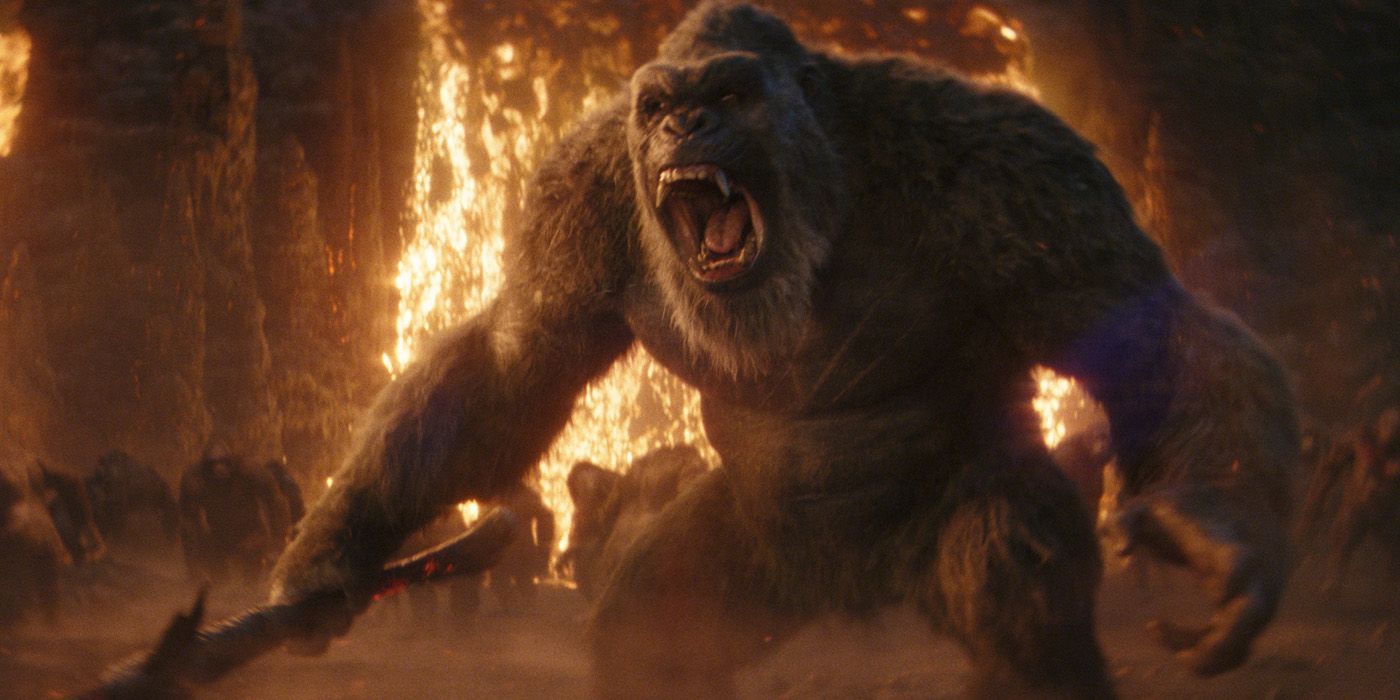
SMITH: Well, we can’t take our MOCAP actors up in our zero gravity plane or out in outer space, right? So it becomes more of a “capture what you can” and you have to rely on the skill of the animators after that to get that feel. That’s also another case where even if you’re doing that fight with humans, what would happen in Zero-G is not necessarily what you want to happen in the movie, because it’s maybe not as interesting or controllable. We relied on Ludo, on his team to kind of, you know, bridge that looks interesting, still feels like Zero-G, it maybe isn’t exactly how it would go but still is cool and controllable and the client likes it and, and like, Ludo could probably talk more about that.
CHAILLOLEAU: Well, I think the main thing was to just make sure that we had a good rhythm going on for the story of the sequence. We don’t have that much work done in previous like we did for the other sequences. So we had to pre-vis pretty much everything based on motion. We have to think about the choreography of all that into this environment, which is quite confined, it doesn’t look like it, but it’s quite short in terms of height with the ceiling and the ground. Plus, we have a lot of rotation, you know, rocks all around to fill these gaps. So we had a lot of assets to play with for the construction of it. But then we just started to break down, you know, shot by shot with the actors to find the best way to tell each story when we had the chance with motion capture, but mostly it has been worked after in keyframe just to help with this continuity pass.
Plus we have the weapons, you know, Skar King uses a whip in the Zero-G to bring the arms, you know, come closer. So there are a lot of physics things which has to be artistically driven because we could not make them right with the real numbers, real things.
Yeah, it’s really it’s such a magnificent sequence. With a movie this massive, you guys did over 400 shots with so many different sets and so many different little tiny details. And there are, as you said, hundreds of people working on this – how do you go about working together so cohesively to create something where each little piece is so unique, but it all still comes together and looks very unified?
SMITH: A lot of meetings, really. It’s just every day. I think the production ran about 54, 56 weeks. And I think the 1st half of that I think was just building environments, building assets, and doing Look [Development]. I mean, aside from anim being in progress, just getting stuff built, and honestly that mostly falls on me to just make sure that the ship is pointed in the right direction. And it’s hard, man. Like it’s wrangling creatives is not the easiest job in the world. [Laughs]
So it’s always a trade-off, of like…you’ve got all these people, all these amazing people here at WĒTĀ. I love working here. There’s so many amazing people on your show and you just have to find the space where you can let people, let all those creatives be creative and feel like they have a creative input no matter how small it is. Whether it’s “I put this cool tree here,” or “We have this idea for the shaders,” or, “I have this idea for this motion,” and balancing the idea that you want to give everyone a piece of that creative capital that you get from the client at the same time, and making sure that everything that goes into there that goes to the client is what the client wants. And “No, you can’t do that,” because of whatever the reason is. “The client is not going to like that,” or “The client wants this thing, maybe try something else.” So it’s always a lot of like, you know, I don’t want to make every creative decision. That’s not the way to get a good result in my opinion. So it’s just kind of finding that balance of keeping the ship pointed in the right direction while giving everybody as much creative input as possible.
It’s really impressive.
CHAILLOLEAU: No, yeah, I was just bouncing on that. It’s exactly the same in motion when we had like a big sequence with exciting shots like this. And you have a team of animators super motivated because they love Godzilla or Kong or even the Zero-G fights or whatever. It’s very nice to hear and let the room of expression for everyone because, that’s what brings the details on everything.
Like this shot of Godzilla, you know, using the rocks to bounce from one rock to the other in Zero G. It looks like it’s swimming basically, and that team came up with like simple ideas, discussion with animators and then we just basically let the creativity go. Or for Shimo, you know, acting like a cat being more feline or Skar King being, you know, sitting on her with all these spikes around. That’s the things that we had to figure out and there is tons of them on the show with numerous things that we had to figure out on the go. That was, that was basically bringing lighting and sometimes even wanting more of that and the clients were very receptive to that. So the whole relationship between clients and us and the team at WĒTĀ was really much about having fun, making it right, and proposing things. And I think the, the whole – I had experience and, you do, on several shows but on that one, the whole energy was great, like, super great. Everyone was super into it and had fun.
That’s awesome. It’s such a tremendous amount of work and the fact that you guys can create something like this in, just like you said, I think, a year is incredible.
Smith: Yeah. Well, that’s, that’s the thing. Like you said, we did I think 417 shots, we only had nine plates turned over, and all those plates were really just so that we could put a big fancy environment outside like a window of the HEAV. So we basically did all the 32 minutes of full CG, and it’s so much work, and with that much work, there’s so much room for you to let people be creative. As opposed to like, you know, just filming a plate, and we made a monster, and we’re putting a monster in a real-world environment. It’s so limited there as far as how much the team can add to the creativity of that project. And like in this thing, it’s just like, please just make something up because there’s so much going on that you need everybody to be as creative as possible.

